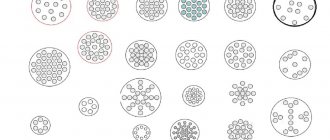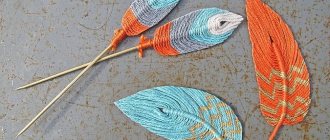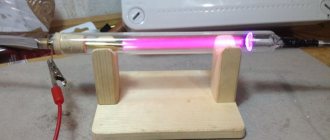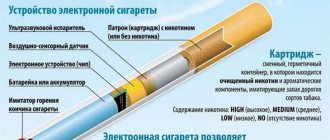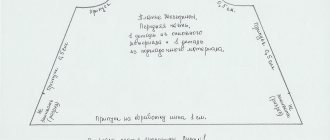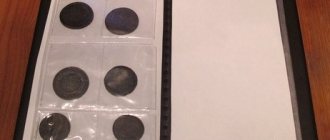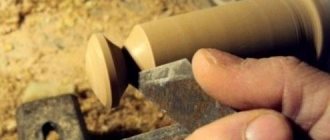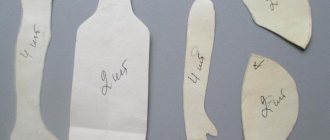It greatly simplifies the cutting process:
Hot knives are available in three types:
The models are similar in principle, but differ in results. Each device has a step-down transformer. However, with a string the material is cut only in a straight line, and with the blade of a hot knife you can make shaped products from fabric and other materials.
Advantages and disadvantages
Thanks to the thermal knife, the creation of multilayer products is greatly simplified.
Its advantages for needlework are obvious:
Disadvantages include:
Features of work
While learning how to make a manual foam cutter yourself, it is also necessary to consider the operating features of such equipment. As mentioned above, such an instrument has a string. It heats up and melts the surface of the foam.
This material reacts quite poorly to heat.
Therefore, it is important to maintain the technology of the entire process. Cutting with a hot thread is quick
This allows you to achieve high quality cuts.
It's easy to check the string's heating level. To do this, a test is carried out on a test piece of polystyrene foam. If, when immersing the thread, long pieces of material remain on it, it has not yet warmed up enough. If there is no foam on the string at all, then the temperature is too high. In this case, you will have to cool the instrument a little. With proper heating, you can perform fast, accurate cutting.
How to make a thermal cutter for ribbons with your own hands
To make your own hot knife for cutting satin ribbons you will need:
6 steps to make a hot knife for cutting satin ribbon
Foam Linear Cutting Cutter
To create a device for horizontally cutting foam sheets, prepare a table. Attach a pair of vertical risers with insulators to it. Stretch a piece of nichrome wire between the risers, the end of which is connected to the contacts of the transformer.
When a hot foam cutting knife is heated, the thread cuts through the foam easily and stays taut with the help of a suspended weight. For vertical cutting, the wire is stretched vertically, and a manufactured frame made of metal or wooden blocks is fixed on the working surface.
Cutter for shaped cutting of foam plastic
First, the cutting part of the jigsaw is removed. A wire is connected to the handle. They are isolated. Nichrome wire is connected to the cable using nuts. In addition, you can take a soldering iron and replace the heating element with nichrome wire. Thanks to this device, it is easy not only to cut sheets of foam plastic, but also to make recesses in them.
Metal plate cutter
It is important that the sharpening angle is small, because the material is cut using both the blade and the plate. This device has one drawback - the optimal temperature is selected experimentally. With such a hot knife it is convenient to cut even plastic.
Structurally, the tool is a thin blade or a stretched thread that heats up.
Assembling a hand cutter on nichrome thread
To make the device, prepare:
- nichrome wire 0.8-1 mm thick,
- a couple of ice cream sticks,
- a couple of metal strips from a children's construction set,
- bolts and nuts with a diameter equal to the holes in the metal strips,
- block for a pair of AA batteries,
- a couple of AA batteries,
- small button.
- Attach wooden sticks to the battery pack. Apply hot glue to their edges and attach them to the battery pack from the side where the metal terminals are located.
- Drill holes in the strips for the cable. Stepping 5 mm away from the battery pack, drill holes in the wooden sticks with a diameter of no more than 2 mm.
- Pass one wire from the battery pack through both holes to a parallel wooden strip. Pin the button. Cut a piece of wire at a distance of 1 cm from the power supply.
- Solder a button on one side of the wire, and a piece of wire on the other. Glue the button to the bar. Use the same hot glue to insulate the soldering areas.
- Drill holes at the top of the wooden sticks. Bolts are inserted into them to secure the metal strips. Screw the bare ends of the wires from the power supply onto the bolts.
- Thread nichrome wire through the holes of the metal strips. Secure its ends with a screw, nut and washer. Remove excess. Insert batteries into the power supply.
Step-by-step production of a thermal cutter from improvised materials
For one-time use of a hot knife for cutting plastic or other materials, the purchase is not economically rational.
The most primitive thermal cutter can be made from a guitar string and 5 large flashlight batteries. Connect the batteries into one cell. Connect a string to the ends of this block, creating a closed electric arc that will heat up. When the heated string comes into contact with the surface, the material will melt, breaking into halves with smooth edges. This device can easily handle cutting a sheet of plastic or 2-3 blocks of foam, and then you need to replace the batteries.
Source
Security measures
Working with thermal knives requires caution and attentiveness. Before starting work, the device should be inspected, the integrity of the wire should be checked, and a test run should be performed.
It is imperative to follow the instructions provided by the manufacturer.
The blade or string of a thermal knife heats up to very high temperatures. Direct skin contact with them should be avoided. Even short-term exposure can cause quite serious burns. The heating element must be completely cool before storing. Despite the fact that tabletop models are quite stable, it is still worthwhile to provide a stand made of non-flammable material in case they fall.
In the place where you work with the device, you must also observe safety precautions. It is necessary to isolate children and pets from contact with it. When cutting synthetic materials, combustion products can also be released into the atmosphere, especially if we are not talking about fabrics, but about building panels
It is important to ensure sufficient air flow into the room or move work to the open air. Cutting PVC with heat tools is strictly prohibited - the fumes it produces are extremely toxic
What types of fabric cutting equipment can we offer?
Conventional scissors, knives and blades can be used as equipment for cutting textiles, but much better, especially for some types of fabrics and hair cutting, are hot fabric scissors and knives that are heated by electric current due to their special design.
Standard thermoscissors with switch
Electric fabric scissors look like regular ones, but they plug into an outlet. Through a special heating element, the cutting blades are heated to a certain temperature, which can be in the range from 100 to 600 degrees Celsius and is adjusted by a thermostat. They are used for sealing the edges of fabric at the site of its cut and for other purposes.
The thermal knife looks like a flat soldering iron. The principle of its operation is similar to hot scissors: it, like them, copes better with even and accurate cutting of certain types of materials. In addition, it can be used to cut out details and figures in the form of stars, houses and animals according to pre-prepared forms and drawings.
It is worth paying attention to heating scissors, since they are most often used in the textile industry and in home processing and cutting of fabrics.
Thermal knife in the form of a jigsaw
Areas of application
The desire to purchase a thermal cutter arises among both handicraft lovers and master builders.
The scope of application of hot knives is as wide as possible. They are used for different materials. For foam plastic. The material is prepared for modeling in floristry and other creative tasks.
For SIP panels. Here, precise cutting allows you to avoid crumbling of the material.
For penoplex. Thermal insulation materials of this type can also be easily cut with a hot blade. They are used primarily to create warm floors.
For fabric. The tool is used for cutting and soldering parts made of satin, nylon tape and other synthetic materials.
For shrink film. This is how prints are made for T-shirts and other textiles.
For cutting plastic. With a hot knife it can be easily cut to the desired size.
For foamiran. Here, thermal cutting helps to quickly cut through several layers of material and create shaped elements
But it is important not to overheat the foamiran - for it the heating temperature of 400-600 degrees is quite high.
Electric Heated Fabric Cutting Scissors
Electric scissors for fabric materials are used for cutting some synthetic types of fabrics and textiles such as neuron, polyester, nylon, parachute silk, cordura, polyadmides.
Important! Fabric shears are not suitable for cutting very thin textiles such as satin or organza. When working with these types of material, the advantage of using the device is lost, since it allows the edges of the fabric to melt rather than fray. Thin fabric begins to melt too much.
The main benefit of using this type of scissors is a significant time saving when working with cutting products. Their use will allow you to avoid processing the edges of tissues and incisions additionally after the incision.
Simple electric scissors with switch
Working principle of hot scissors
The operating principle of hot scissors is as follows: when they cut fabric, its edges are sealed at the cut points due to the high temperature of the blades. If you use ordinary scissors, you will have to process the edges manually using other available tools.
The design itself assumes the presence of ordinary sewing scissors, which are connected to the network using a cable and plug. With the help of a special heating element, the blades of the device will heat up to the desired temperature, allowing you to work comfortably.
It is also important to understand that cutting fabrics that are not suitable for this is fraught with the adhesion of melted textiles to the blades, the appearance of an unpleasant odor and damage to the fabric, and ultimately to the scissors.
Operating rules
When working with such scissors, you need to be careful and careful; you should not neglect safety precautions and reading the instructions for use. The operating rules for thermal shears require the same rules as the use of other electrical devices. It is forbidden:
Important! In addition to personal safety, the scissors themselves should also be used correctly. They cost a lot.
Also, do not overheat the device or use it in an unstable network.
Electronic thermal shears
conclusions
Making a foam cutter with your own hands is quite simple. The methods listed above will help you understand the structure and operating principle of the foam cutter. Such devices are practical and easy to assemble. Each method has its own advantages, so home craftsmen can choose the most suitable one, depending on the available materials.
It is important to exercise extreme caution when working with such power tools. This poses a risk of electric shock. Some homemade cutters are also used for cutting polystyrene foam.
Some homemade cutters are also used for cutting polystyrene foam.
How to make hot scissors with your own hands
You can make hot scissors for cutting fabric with your own hands at home. If a person has advanced knowledge in electronics, then it is quite possible to make a device from ordinary scissors, thermal materials and a wire with a plug. In any case, it is unsafe even if the person is experienced in this matter.
There is a known option in which the scissors are heated on a stove or in another place manually. After this, appropriate manipulations with the tissue are performed. You can also use a soldering iron, however, all these methods have a large number of disadvantages and can damage the fabric.
There are also scissors stored and heated in the holster. They are more often used by hairdressers rather than crafters. Battery-powered devices are used less frequently.
Homemade electric scissors
Finnish inspired knife
DIY Batman mask: made of paper, fabric, voluminous / DIY toys, patterns, videos, mk
I didn’t stop watching the video, money to go to some thread forge, get a master class and forge something decent, I wasted, of course , therefore, after all, I went to the store, which is called in three words (knife, club, Moscow) and bought a small Finnish blade there. Here it is.
I needed something close to this option.
Only, even thinner and more accurate, since the blade is quite small.
In this YouTube of yours, of course, working on a grinder looks easy and simple. A person easily spins a blank on the tape and it produces deer, chandeliers and synchrophasotrons. In practice, I realized that it’s crazy. I pressed it a little, delayed a little and that’s it. There is a hole, a bevel, which cannot be corrected in any way except by grinding everything else under it. I peeled and peeled, until I got to the epoxy in one place (I swore and realized that that was enough, probably.
Of course, I wanted to shorten it, but not that much. I howled like a wolf, blasphemed and hit myself on the head with my hand, because I had been warned. But then I tried it on and realized that it would fit under a woman’s hand. Tea, don’t turn the world upside down, you don’t need a very big lever.
After a long period of sanding with sandpaper of different grits and processing with Danish oil, I got this result. I really hope that nothing further breaks off(
Thank you for your attention, good luck to everyone in your endeavors!)
Review of electric scissors for sewing, except hot ones
In addition to heated electric scissors, there are also mechanical ones. They are multi-purpose and suitable for almost any type of material. With their help you can quickly and smoothly cut fabric from any material. Even the leather of shoes and hats can be cut easily. In addition to cutting fabrics, they are used for cutting grass. The most popular company producing such devices is Bosch.
Important! As a rule, even though such devices are mechanical, they make virtually no noise and do not heat up. Moreover, this solution fits well on the hand thanks to the ergonomic handles.
Thus, with the help of sewing tools you can significantly simplify your life and improve the quality of manufactured products. Using them correctly, you can sew unique decorative elements or clothing, and also extend their service life.
Source
What to look for when choosing scissors for cutting fabric
The right choice will greatly simplify the cutting of fabric; the edges will always be smooth. Professional seamstresses have several tools in their arsenal.
This design provides maximum convenience when processing fabric; the material does not rise from the surface, the hand is always within the cutting plane.
Which ones are better
The best ones are those made of stainless steel. They have a long service life and there is no need for frequent sharpening. Cutting thick materials requires less force, the cut is always smooth
When choosing, you should pay attention to the handles, especially the material they are made of.
Do-it-yourself thermal knife for satin ribbons/foam
Hi all. Mom does handicrafts, mainly makes all sorts of things from satin ribbons. Because When cutting such ribbons, there are threads sticking out at the ends, then it is necessary to melt them with a flame. For Mother's Day, it was decided to make a thermal knife to simplify the work. I couldn’t find similar posts on Pikabu, so I decided to write it myself. You can find information on the Internet on how this device is made, but basically it is made from a power supply from a computer. I think it’s unlikely that every person has a working power supply lying around at home, and it’s not advisable to buy one even from scratch. In addition, the dimensions are significant. In my case, instead of a power supply, I used a step-down transformer so that the output voltage was 12 V and the power was 50-70 W. To make a thermal knife you will need: - a body (I made it from chipboard from an old box. You can use any material that does not conduct electric current); — transformer (output 12 V, 50-70 W); — two bolts, 4 washers, 6 nuts (in my case, bolts with M12 thread and a length of 10 cm were used); - switch; — nichrome thread (in my case, the thread cross-section is 0.3 mm); - connection cable; - fork.
Assembled my body
I drilled the necessary holes for the bolts and the switch (the switch was firmly in place, so there is a photo with it :D). I also drilled ventilation holes from the bottom, but I don’t know for sure whether they are needed at all.
We fasten the bolts and washers to the body with nuts.
We connect the transformer output with bolts.
We connect the switch and the transformer input to a 220 V network. One of the contacts of the switch is responsible for turning on the LED in the switch itself. The connection diagram for this switch is presented below.
We turn our body over and stretch the nichrome thread.
We plug it into the network and voila.
PS This is my first post of this kind, so please don’t blame me for mistakes. I also ask you not to kick me if some savvy electricians come along and say that everything is wrong. And don’t blame the photo quality either.
